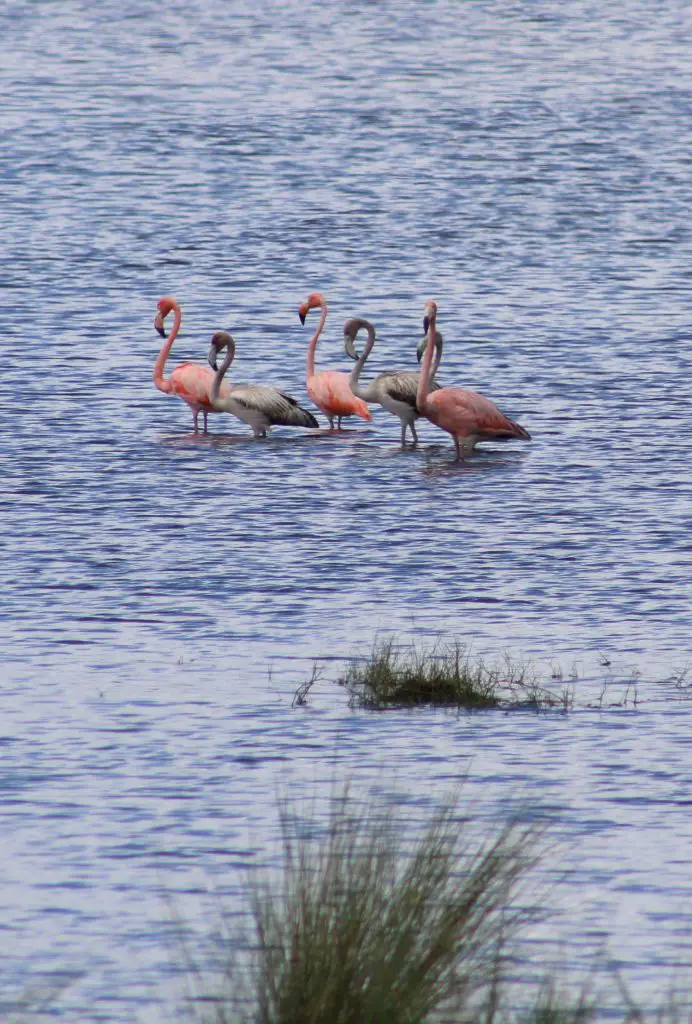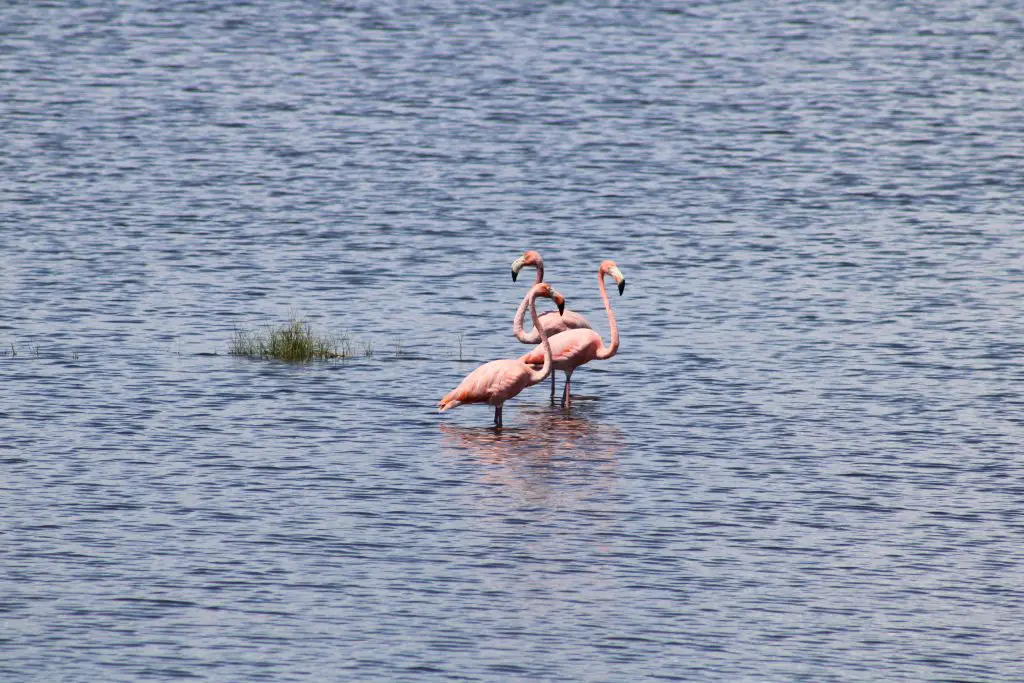A group of flamingos is most commonly called a flamboyance. But these groups of these brightly-colored birds can go by other names too and can vary based on the situation.
This guide answers the question: What is a group of flamingos called?
Terms for a group of flamingos

The right term for a group of flamingos varies based on what the geese in question are doing. Below is a look at what terms to use and when to use them:
- Flamboyance of flamingos: The most colorful and commonly used term for a group of flamingos, especially when they’re standing or wading together in shallow water—reflecting their vibrant appearance and social behavior.
- Colony of flamingos: Used when referring to flamingos during the breeding season, particularly when they gather in large numbers to nest on mud mounds.
- Stand of flamingos: Describes a group of flamingos standing still, often in shallow water, with their long legs and necks creating a striking visual.
- Crèche of flamingos: This term is used when flamingo chicks group together while the adults forage nearby. It functions like a nursery, where the chicks are protected and kept together, often guarded by a few adult birds.
- Regiment of flamingos: A less common term, sometimes used to describe an orderly group of flamingos, especially when they’re moving in unison.
- Pat of flamingos: A rare and archaic term, occasionally found in older writings, referring to a small, close-knit group.
- Flock of flamingos: A general term suitable for flamingos flying together or gathering in non-breeding situations.
Notably, a herd of flamingos isn’t an appropriate term.
When do flamingos gather in groups?

Some reasons flamingoes gather in groups include:
- Breeding and Nesting: Flamingos gather in massive colonies—sometimes in the tens of thousands—during the breeding season. Group nesting increases the chances of reproductive success and provides collective protection from predators. They build mud mound nests close together and synchronize mating and egg-laying.
- Feeding: Flamingos often feed in large groups, especially in shallow lakes or lagoons rich in algae, crustaceans, and plankton. Group feeding helps stir up food from the water and may improve foraging efficiency.
- Protection and Safety: Flamingos gather in groups to reduce the risk of predation. A large flock offers more eyes to watch for danger and creates confusion for predators, making it harder to target a single bird.
- Social Interaction: Flamingos are extremely social and rely on group dynamics for communication and bonding. They engage in synchronized behaviors like head-flagging, wing-saluting, and marching to strengthen social bonds and stimulate breeding readiness.
- Migration or Seasonal Movement: Some flamingo species gather in flocks when relocating in response to changing water levels or food availability. These movements may be local or long-distance, depending on the species and environment.
Male flamingo vs female flamingo: Correct terms
When you see a flamingo, the correct term varies based on its gender and age. Below is a look at the terms to use:
- Cock: An adult male flamingo, though this term is rarely used outside of scientific or formal contexts.
- Hen: An adult female flamingo, especially used in breeding contexts or avian terminology.
- Chick: A newly hatched flamingo, covered in gray or white down and completely dependent on its parents.
- Hatchling: A very young flamingo just out of the egg, typically still in the nest.
- Juvenile: A young flamingo that has grown past the chick stage but hasn’t developed its full pink coloration. Juveniles are usually gray or white and gradually turn pink as they mature.
- Fledgling: A juvenile flamingo that has developed enough to start flying, though it may still rely on the group for feeding and protection.
- Colt: Occasionally used as an informal term for a young flamingo, though this is more commonly associated with young cranes or horses and not a standard term for flamingos.
Final Take: What is a bunch of flamingos called?
In general, it’s fine to call a group of flamingos a flock. But if you want to get more specific, feel free to use the collective nouns outlined above. Personally, I love using the word flamboyance whenever I get a chance!
